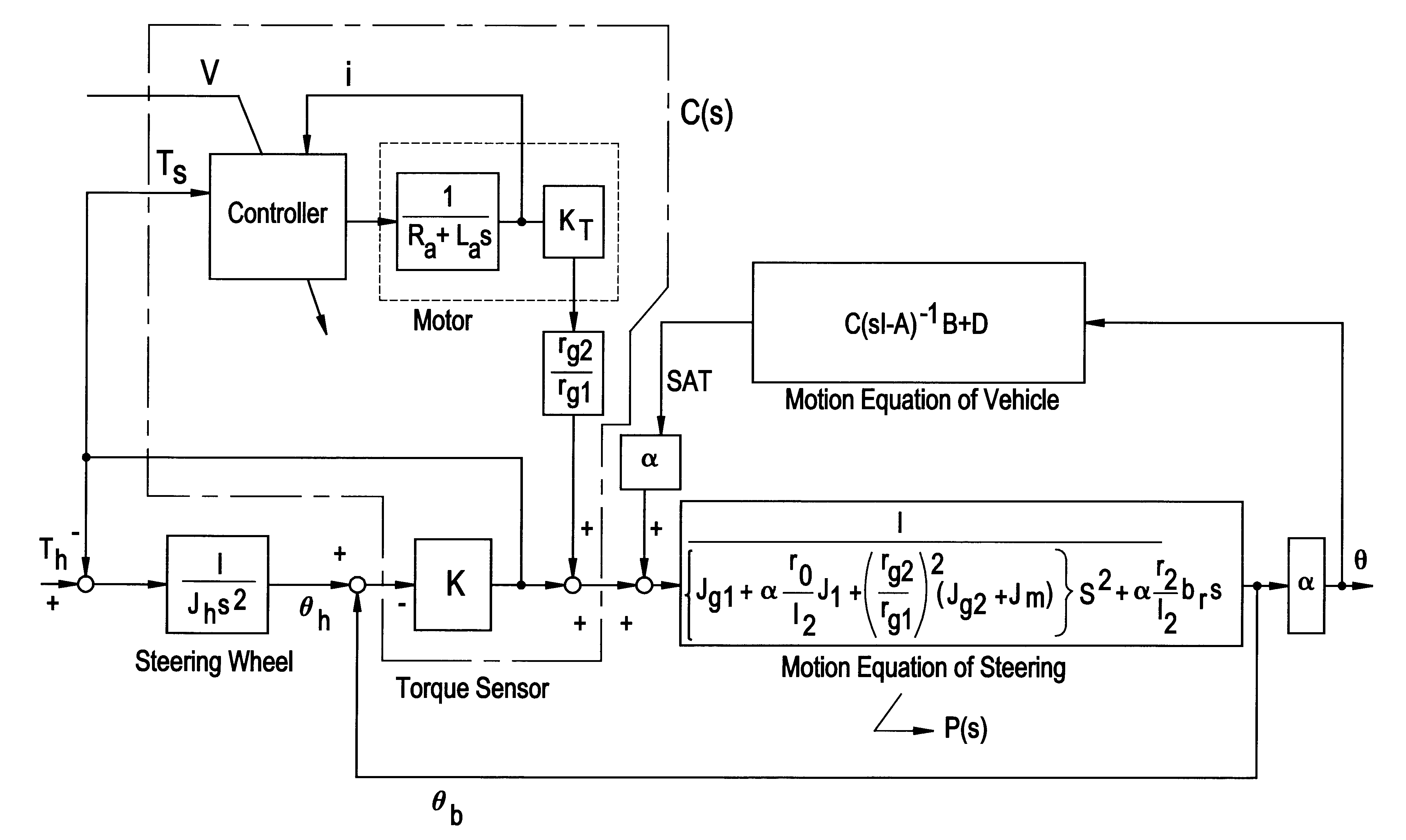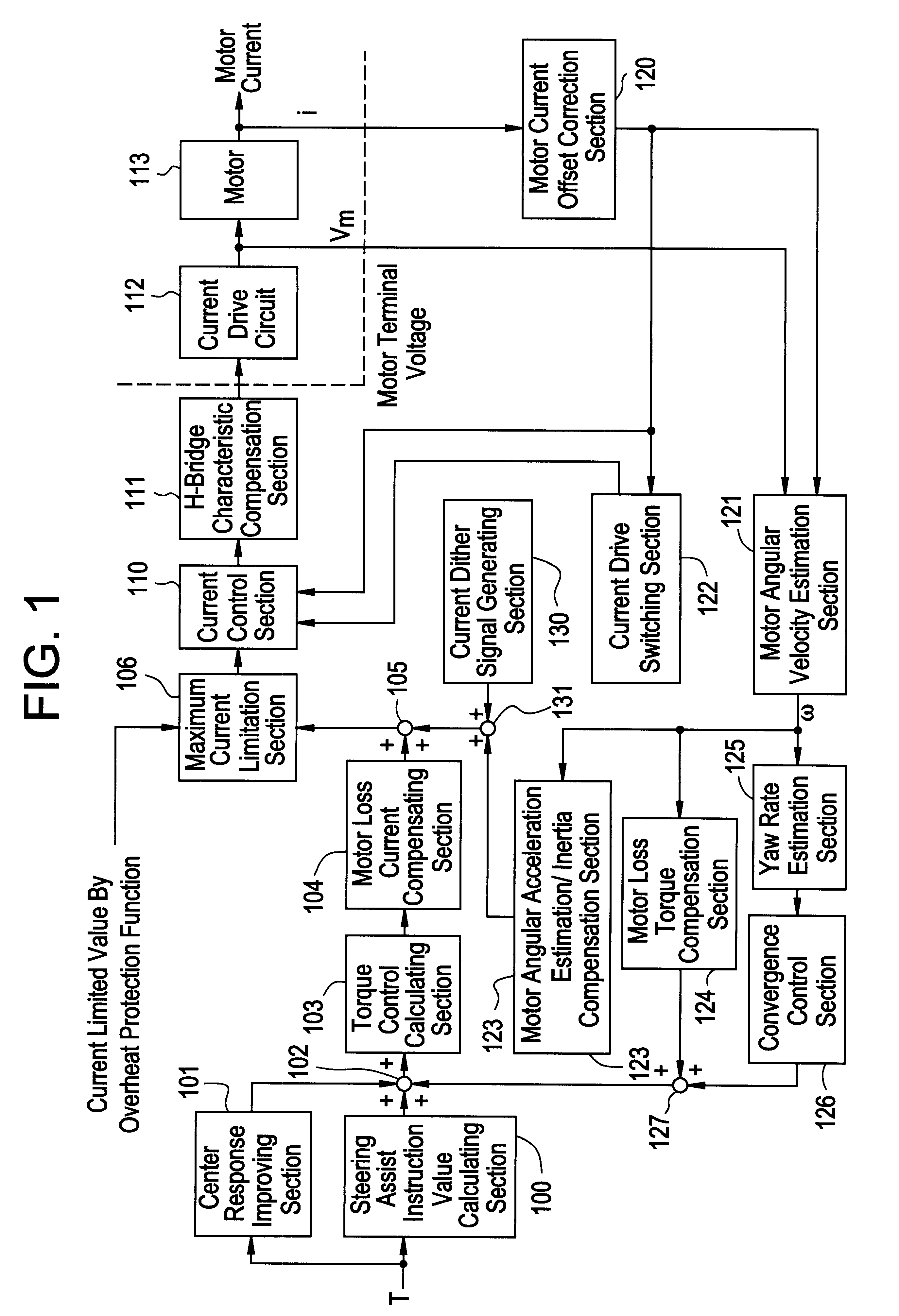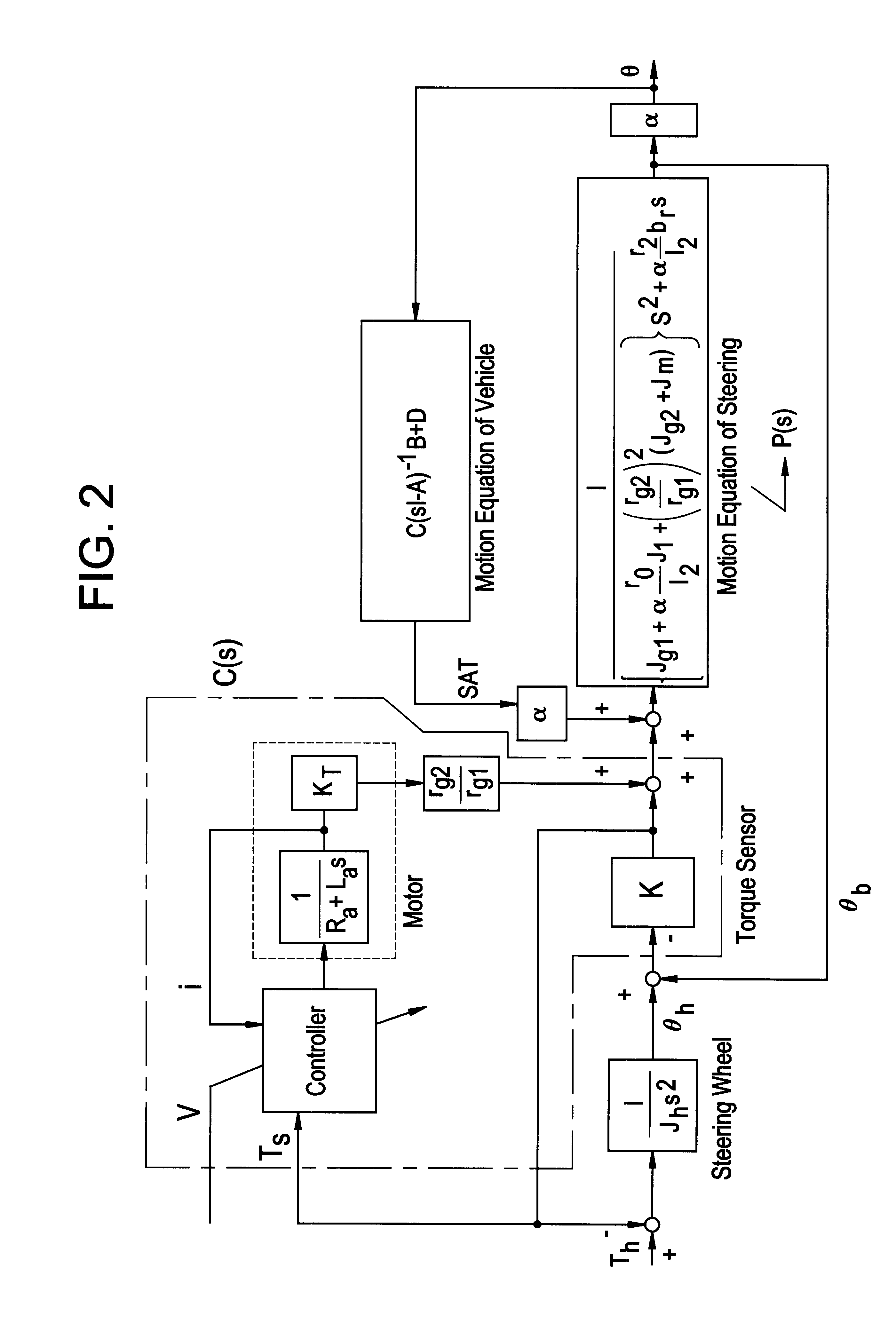Control device for electric power steering apparatus
a control device and electric power steering technology, applied in the direction of steering components, power driven steering, position/direction control, etc., can solve the problems of reducing the memory capacity, reducing the steering sense, and increasing the required memory capacity
- Summary
- Abstract
- Description
- Claims
- Application Information
AI Technical Summary
Benefits of technology
Problems solved by technology
Method used
Image
Examples
second example
2. SECOND EXAMPLE
An explanation will be given of a case in which, data points(b1, b2, b3, b4) =(x1, y1)(x2, y2)(x3, y3)(x4, y4) extracted from a characteristic curve "a" indicating a desired assistant instruction value I corresponding to the steering torque T of FIG. 28, are represented by the following equations (5). ##EQU5##
In the conventional system(Japanese Patent Application Laid-open No. 10-59203 A), the steering assist instruction value calculating means is constituted by an operation means which carries out operations based upon a plurality of approximation function expressions that make approximations on high-order function expressions that are coincident with at least three points on the steering assist instruction values corresponding to steering torques that are defined by high-order functional expressions. For example, supposing that a quadratic function expression passing through, for example points b1, b2 and b3, is c1, and that a quadratic function expression passing...
first embodiment
In the present invention, for example, in accordance with the first embodiment, three quadratic curves d1, d2, d3 for interpolating the gaps of data points (b1, b2, b3, b4), extracted from a characteristic curve "a" indicating a desired assistant instruction value I corresponding to the steering torque T of FIG. 28, are indicated by the following equations (8). ##EQU8##
Here, the quadratic functions d1, d2, d3 are shown in FIG. 31. In response to the detected steering torque T, an approximation equation for the corresponding section is selected, and based upon the selected approximation equation, a steering assist instruction value corresponding to the detected steering torque is calculated based upon the selected approximation equation, it is possible to easily carry out the operations at high speeds.
In this case, the one-step differentiations d1', d2', d3' of the respective quadratic functions d1, d2, d3 are represented by the following equations (9) based upon the above equation (...
PUM
| Property | Measurement | Unit |
|---|---|---|
| frequency | aaaaa | aaaaa |
| assist force | aaaaa | aaaaa |
| current | aaaaa | aaaaa |
Abstract
Description
Claims
Application Information
 Login to View More
Login to View More - R&D
- Intellectual Property
- Life Sciences
- Materials
- Tech Scout
- Unparalleled Data Quality
- Higher Quality Content
- 60% Fewer Hallucinations
Browse by: Latest US Patents, China's latest patents, Technical Efficacy Thesaurus, Application Domain, Technology Topic, Popular Technical Reports.
© 2025 PatSnap. All rights reserved.Legal|Privacy policy|Modern Slavery Act Transparency Statement|Sitemap|About US| Contact US: help@patsnap.com



